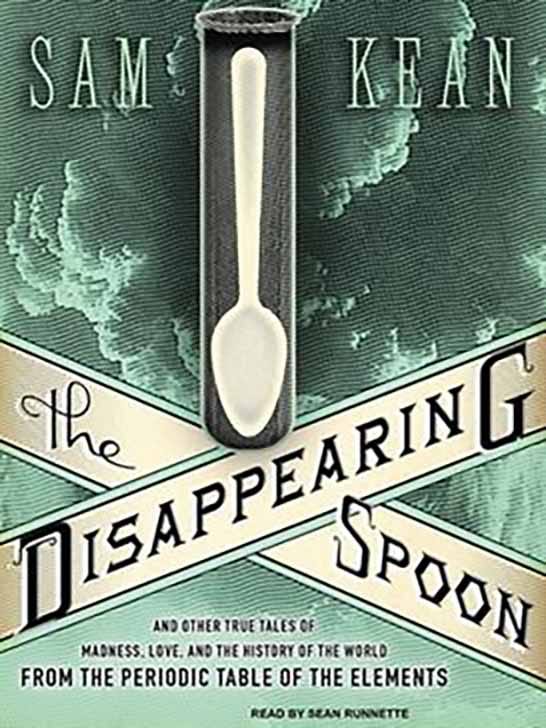Exploring the Periodic Table: Stories and Science Unveiled
Written on
Chapter 1: The Allure of the Periodic Table
Have you ever pondered the discoveries that led to the creation of the periodic table of elements? Sam Kean's book, "The Disappearing Spoon," provides a delightful and informative journey into this subject.

In a remarkable act of solidarity, German scientists Max von Laue and James Franck gifted their Nobel prizes to Niels Bohr, a Danish physicist, during the rise of Hitler. This gesture appeared wise until 1940, when Nazi forces took control of Copenhagen, placing Bohr in a precarious situation. Due to Nazi restrictions, exporting gold became forbidden, and the discovery of these medals could have dire consequences.
Some advised Bohr to bury the valuable medals, but he opted for a more unconventional alchemical solution. He employed aqua regia, a powerful acid known for dissolving precious metals. When German troops searched his institute, they found only a harmless brown liquid in the beakers, completely overlooking the dissolved prizes. After the war, the gold was repurposed to create new awards for Franck and Laue in Sweden. This narrative demonstrates that even quantum scientists can benefit from alchemical wisdom.
Kean notes that gold tends to remain aloof, avoiding bonds with other elements. Meanwhile, Hugh Aldersey Williams celebrates its indestructibility, linking it to high ideals such as the golden ratio and the golden rule. Historically, gold has shaped nations, notably Spain during the Middle Ages. In contrast, Britain’s empire relied on carbon (coal) and iron, while the modern American economy is rooted in carbon (oil) and silicon.
As we delve into these foundational elements, we recognize that our universe is constructed from them. Antoine Lavoisier, a French chemist of the 18th century, was the first to identify elements as unchangeable units of matter, creating a list that included hydrogen, nitrogen, sulfur, and oxygen. This list grew over time, but it wasn't until Dmitri Mendeleev devised his periodic table in 1869 that a coherent pattern emerged. He organized elements by atomic weight and chemical properties, intentionally leaving gaps for undiscovered elements.
Initially, these omissions raised skepticism among experts. However, in 1875, gallium was discovered, possessing the properties Mendeleev had predicted, thereby validating his work and unveiling a substance with remarkable characteristics. Gallium, resembling aluminum, has a melting point of just 29°C, perfect for playful tricks with unsuspecting tea drinkers.
Francium, the last naturally occurring element to be identified, was discovered in 1939. Following this, scientists began creating synthetic elements by bombarding existing ones with high-energy particles. Kean asserts that these represent the first new elements on Earth since the solar system's formation billions of years ago, and they find applications ranging from nuclear weapons to smoke detectors.
The authors share intriguing facts about various elements, such as the potent and long-lasting scent of tellurium, the unexpectedly sweet taste of beryllium, and the exorbitant cost of rhodium, which was honored in a special disc given to Paul McCartney for his musical achievements.
However, not all tales of elements are cheerful. In the 1600s, alchemist Hennig Brand discovered phosphorus by distilling his own urine, resulting in a glowing substance. Centuries later, phosphorus-based incendiary bombs wreaked havoc in Hamburg, claiming tens of thousands of lives in the area where Brand made his discovery. The element's use in modern warfare, such as in Gaza in 2009, continues to evoke moral dilemmas.
Surprisingly, these elements constitute only a minuscule fraction of the visible universe. Helium dominates most of the matter, while hydrogen accounts for roughly 90%. Collectively, all other elements make up a mere 0.04% of all matter, a fraction so tiny that an overzealous scientist might overlook it in their calculations. This disparity in elemental abundance invites contemplation about our place within the universe.
In the grand scheme, the elements that constitute our complex world are among the rarest in existence. This realization prompts reflection on reality and the peculiar events that allow for our diversity in a fundamentally simpler universe.
As we explore the periodic table, we uncover more than scientific data; we find narratives that highlight human creativity, significant historical events, and ethical quandaries. Each element, with its unique traits and applications, reveals insights into our world and our relationship with the foundational building blocks of matter.
Both "The Disappearing Spoon" and "Periodic Tales" offer captivating perspectives on the elemental realm. However, they struggle to intertwine diverse narratives from different discovery tales. While "The Disappearing Spoon" is cleverly constructed and accessible, it occasionally veers into cheesiness. Conversely, "Periodic Tales" adopts a more introspective and personal approach, particularly captivating when recounting the author's encounter with a homeopath marketing plutonium "remedies." This second work, though not without flaws, provides a beautifully rich exploration of our elemental world, encouraging profound reflection on the nature of matter and our role within it.
Chapter 2: Insights from the Periodic Table
In the video "A Short History of the Periodic Table," viewers can gain a deeper understanding of the history and significance of the periodic table, exploring key discoveries and figures that shaped our knowledge of elements.
"Tales From The Periodic Table" presents intriguing anecdotes and insights into the elements, showcasing the unique stories behind their discovery and application in our lives.